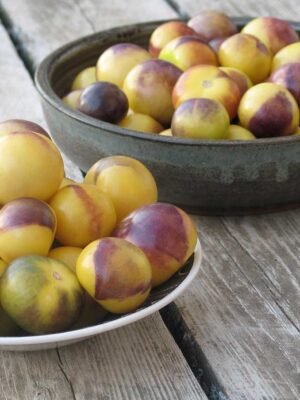cicerchia – pois carré
$ 5,00
Lathyrus sativus, Fabaceae
lentil, almorta, chícharo, grass pea, chickling vetch, khesari
Cultivation of this legume has been documented in the Mediterranean since Neolithic times. It could be one of the first crops domesticated in Europe around 6000 BC (source Feedipedia). It is known as a popular dry vegetable in Italy (cicerchia), Spain (almorta), Portugal (chícharo) and also in India and South America.
We have grown the square pea from seeds intended for human consumption, from the beautiful little island of Ponza in Italy's Tyrrhenian Sea, where this legume is still commonly eaten as a soup (zuppa di cicerchie) or with pasta. This soup is an essential part of Campania's peasant gastronomy, and is one of the specialties of Anacapri on the island of Capri.
Easy to grow, this species tolerates poor, dry stony soils, as well as heavy clay. It also tolerates temperature variations, and we can sow early in the spring, and harvest as early as summer rather than autumn. It's one of the easiest and most resilient crops available for a garden aiming for food self-sufficiency.
The taste of the seeds is reminiscent of chickpeas, only more aromatic. It's easy to become addicted to this flavor, but we advise you to consume this legume in moderation, as it contains a toxic amino acid that can cause nerve damage if consumed excessively over long periods*. That said, seeds are perfectly safe and highly nutritious in small quantities, but should not represent more than 30 % of the feed ration. In fact, long soaking, cooking, rinsing with water and moderate consumption make this a delicious legume to discover.
In addition to all this, the blue-tinted white papilionaceous blossom makes this food crop an ornamental asset, making its presence very pleasing in the garden.
The Spanish lentil is enjoying a revival thanks to the efforts of the Slow Food association. https://www.labonausanza.it/ .
*In the past, it caused a disease called lathyrism in people who ate large quantities of this legume every day.
bag = approx. 25 seeds
Handcrafted seeds produced here at LA SOCIÉTÉ DES PLANTES, Kamouraska, Qc
In stock
Sowing can be done from May 20 in our climate, directly in the garden, in rows spaced 1 foot apart and in stacks of 3 seeds every 6 inches. Pre-soaking the seeds in water for 6 hours improves germination in the field. The crop is grown like a bush bean, with no need for staking. Harvesting takes place when most of the pods have dried. The plants are cut off at the base or pulled out and left to dry before final extraction. Allow about 3 months from sowing to harvesting.
https://www.feedipedia.org/node/285 = Chickweed thrives on a wide range of soils, including poor soils and heavy clays. It tolerates waterlogging and moderate alkalinity or salinity.
| # of the lot for sale | SDP23 |
|---|---|
| Number of seeds per bag | 25 |
| Test germination conditions | Dark, 15ºC to 18ºC, 4h soaking |
| Germination rate for 2025 of the lot on sale | 84% |
Related products
-

Mideast Peace cucumber
$ 4,50 Add to cart -

tomatillo Indian Strain bio
$ 4,50 – $ 23,00 Select options This product has multiple variants. The options may be chosen on the product page -

organic Blacktail Mountain watermelon
$ 4,50 Add to cart







